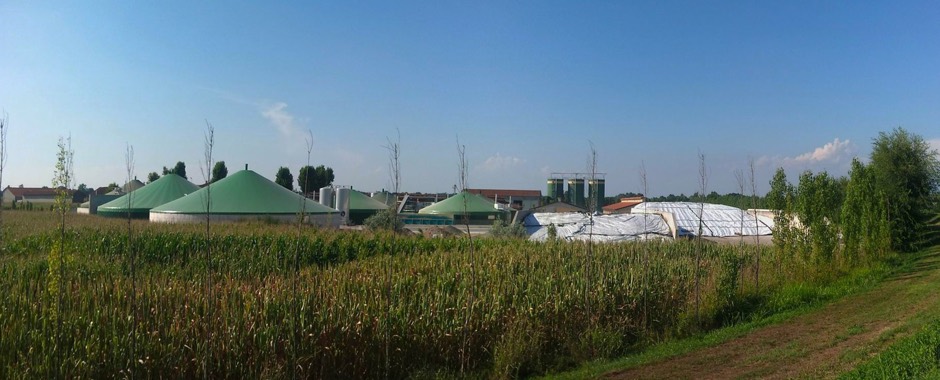A new STEPS working paper by Bianca Cavicchi and Adrian Ely examines the history of biogas as a source of energy in the region of Emilia Romagna, Northern Italy.
Over the last few decades, the potential of biogas in Emilia Romagna has been explored and debated by different agencies and people. But it has not delivered the sustainable outcomes that some people expected.
In our paper, we investigate the feedbacks between the ways different actors talked and thought about biogas, and the biogas system itself, to understand how these have affected the pathway of biogas and its sustainability.
The story of biogas in Northern Italy has its roots in the 1970s. In the aftermath of the oil crisis, national and regional actors were seeking to find alternative sources of energy to oil and gas. In Emilia Romagna, the close relationship between farmers, industrialists, and politicians resulted in research and experiments around biogas.
However, it was not until the 2000s that biogas adoption gained momentum – particularly under the pressure of a sugar industry crisis which began with the reform of the Common Agricultural Policy in 2004. Five years later, in 2009, a financial incentive for bioenergy production was introduced.
What happened in Emilia Romagna?
Emilia Romagna seemed to have the right conditions for a well-structured and sustainable biogas production system to develop. Among other things, the region is rich in farmland, agricultural resources, livestock, and links between the industrial sectors and agriculture and farming knowledge. But the development of biogas led to strong social opposition and local negative environmental effects. What went wrong?
To answer this question, our study explored how debates about biogas development were shaped over time by people’s situated knowledge, and changes in the material world.
We found that, at the beginning, dominant actors (e.g. regional and national politicians, the sugar industry and big farmers, farmers’ unions and the regional centre for animal research) depicted biogas production as the key solution to the sugar industry crisis and the consequent decline of the sugar beet production. They reasoned that biogas could create a new market for the regional agricultural and related sugar industry sectors, as well as contributing to the European climate change goals. The feed-in tariff scheme exponentially boosted the investments in biogas plants (from 29 plants in 2008 to 172 in 2012) and farmers switched to producing energy crops in their fields.
Controversy
However, throughout the region, many people were not prepared for the large number of biogas plants which appeared. Local inhabitants, small farmers, municipalities and the local-regional environmental agencies frantically tried to cope with the consequences of biogas production. These included bad smells, leachate, higher rents for farmland, biogas emissions, the exclusion of local actors from decision-making, and so on.
Local inhabitants and civil society organizations (e.g. Legambiente) very soon started to oppose this type of biogas production and developed their own vision and proposal of an alternative biogas pathway. This included small-size plants, which would use local agricultural by-products, and the production of biomethane.
They handed the proposal to local and regional authorities, who – under the pressure of social opposition – introduced stricter environmental regulations for the production of biogas.
At the same time, the national government reviewed the feed-in tariff scheme changing the criteria and amounts for the allocation of the subsidy.
These changes have stalled investments in biogas, but have not really shifted public opinion about it.
How does change happen?
Our study aimed to demonstrate that the analysis of feedback relations can give both a greater insight into the forces that drive a system’s change in new directions.
In particular, it strongly points to some important policy and methodological implications that could also be extended to other policy domains:
- Inclusiveness is crucial, not just for ethical reasons, but to enable trust, cooperation and the sharing of resources;
- Energy policies should not just aim to reduce carbon emissions, but also be concerned with more subtle and local dynamics, such as losses in soil quality, biodiversity and local warming, which would eventually affect quality of life and carbon emissions in the long-term;
- The study of feedbacks should use or develop analytical methodologies that allow mapping out these types of relations between different dimensions and events.
Download the paper
Framing and reframing sustainable bioenergy pathways: The case of Emilia Romagna
STEPS Working Paper 88 by Bianca Cavicchi and Adrian Ely
